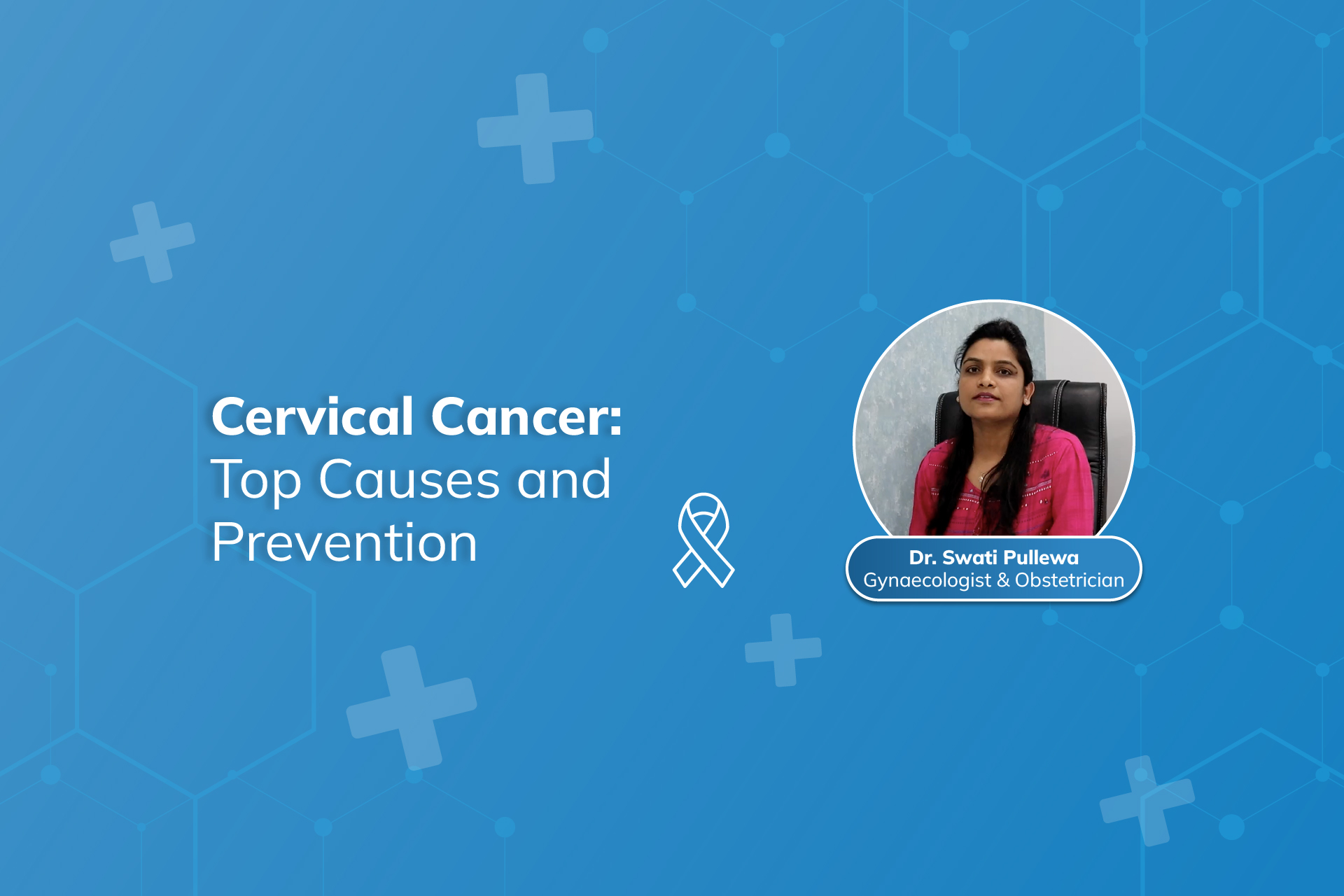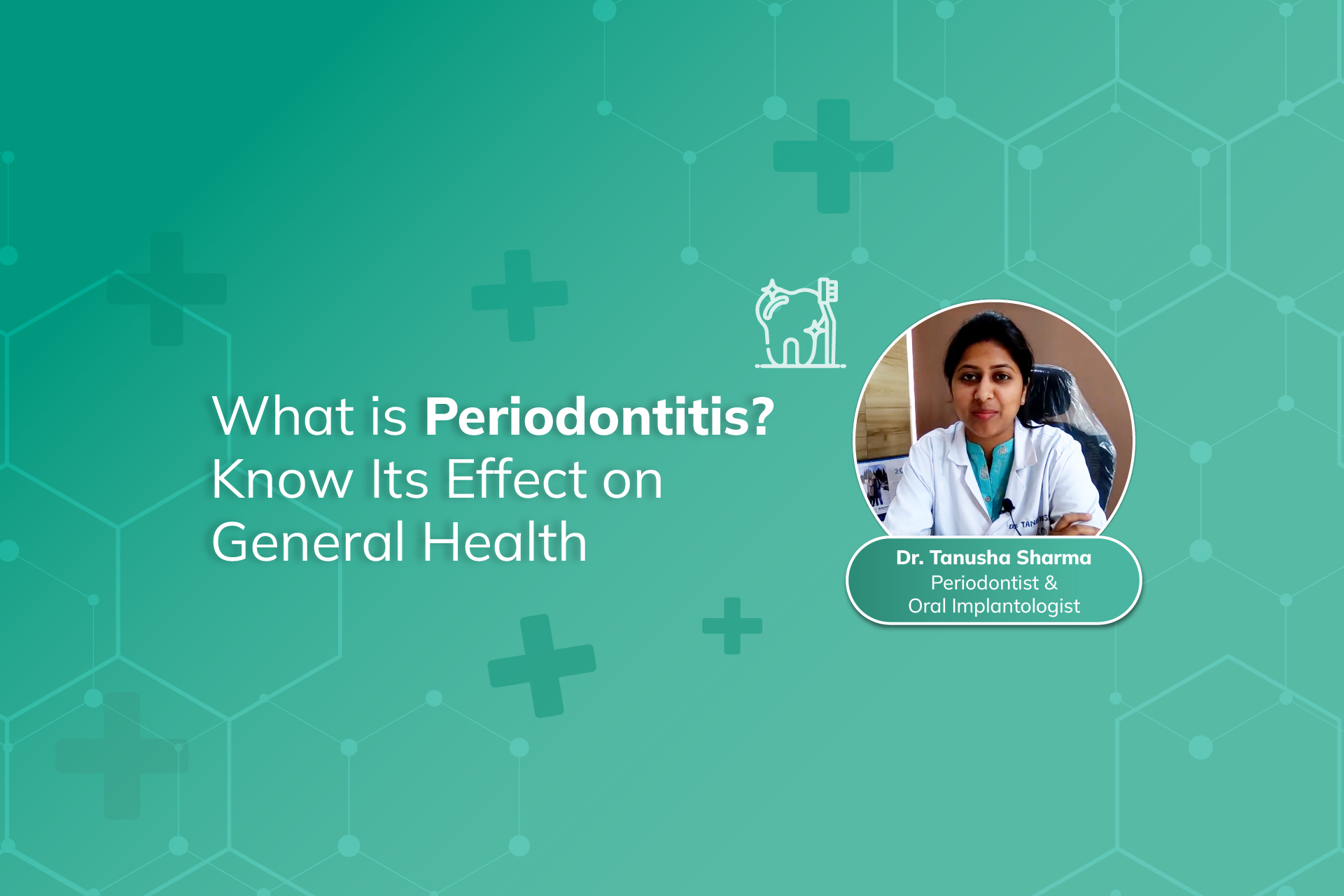Gynaecologist and Obstetrician | 9 min read
Top Causes, Prevention and Vaccines for Cervical Cancer
Medically reviewed by
Table of Content
Synopsis
Cervical cancer is a type of cancer that develops in the cervix, which is the lower part of the uterus. It is caused by human papillomavirus (HPV) infection, which is transmitted through sexual contact. Know more about its symptoms and prevention with top Gynaecologist Dr. Swati Pullewar.
Key Takeaways
- Cervical cancer is largely preventable through cervical cancer screening and vaccination against human papillomavirus
- Risk factors for cervical cancer include infection with high-risk HPV types, smoking, a weakened immune system,
- Regular cervical cancer screening is recommended for all women, starting at age 25, regardless of their risk factors
Cervical cancer is a type of cancer that starts in the cervix, which is the lower part of the uterus that connects to the vagina. It is a serious condition that can lead to life-threatening complications if not detected and treated early. According to the World Health Organization (WHO), cervical cancer is the fourth most common cancer in women worldwide, with an estimated 570,000 new cases and 311,000 deaths in 2018. Therefore, it is important to understand the causes of cervical cancer and how to prevent it.
We interviewed consultant gynaecologist Dr. Swati Pullewar at Mother Bliss Clinic in Pune to understand the causes and prevention of cervical cancer.
Various Causes of Cervical Cancer
Dr. Swati said, “Cervical cancer is the second most common cancer in women. Approximately 68,000 women in India die every year from cervical cancer. To inform you, cervical cancer occurs in the cells of the cervix and is mostly caused due to the Human papillomavirus.”
Human papillomavirus (HPV) is the primary cause of cervical cancer. HPV is a common sexually transmitted infection that can cause changes in the cells of the cervix, which can eventually lead to cancer. Other risk factors for cervical cancer include smoking, having a weakened immune system, having multiple sexual partners, and having sex at a young age.
Who Is At Risk Of Developing Cervical Cancer?
According to Dr. Swati, “Women who have had multiple pregnancies, frequent vaginal infections and multiple sexual partners are more at risk of developing cervical cancer.”
Cervical cancer is primarily caused by human papillomavirus (HPV) infections. However, not all HPV infections lead to cervical cancer. Some women are more at risk than others due to various factors, including:
- Age: Cervical cancer is more common in women over the age of 30
- Sexual activity: Women who become sexually active at an early age, have multiple sexual partners or have a partner who has had multiple sexual partners are at increased risk of developing cervical cancer
- Weakened immune system: Women with weakened immune systems, such as those with HIV, are more likely to develop cervical cancer
- Smoking: Women who smoke are at increased risk of developing cervical cancer, as tobacco smoke contains chemicals that can damage cervical cells
- Family history: Women with a family history of cervical cancer are at increased risk of developing the disease
- Poor diet: A poor diet lacking in fruits and vegetables can increase the risk of cervical cancer
It's important to note that while these risk factors can increase the likelihood of developing cervical cancer, many women who develop cervical cancer do not have any known risk factors. That's why regular cervical cancer screenings and HPV vaccinations are so important for all women.
Symptoms of Cervical Cancer You Should Know
Dr. Swati said, “In the early stages of cervical cancer, there may be no symptoms.” However, as cancer progresses, symptoms may include:
- Abnormal vaginal bleeding, such as bleeding after sex
- Intermenstrual bleeding, known as bleeding between periods or bleeding after menopause
- Pain during sex
- Pelvic pain
- Unusual vaginal discharge
It's important to note that these symptoms can also be caused by other conditions, so it's important to see a healthcare provider if you experience any of these symptoms.
Diagnosis of Cervical Cancer
Cervical cancer is usually diagnosed through a combination of tests, including a Pap Smear test, a pelvic exam, and a biopsy. During a Pap test, cells are collected from the cervix and examined for abnormal changes. If the Pap test is abnormal, further testing may be needed, such as a colposcopy, which uses a special instrument to examine the cervix more closely. According to Dr. Swati, “Sexually active women between the age of 21-29 should get a Pap smear test every three years and women of 30-65 years of age should undergo this test every five years.” If abnormal cells are found, a biopsy may be done to determine if they are cancerous.
Other tests that may be used to diagnose and stage cervical cancer include:
- MRI (magnetic resonance imaging)
- CT scan (computed tomography)
- PET scan (positron emission tomography)
Prevention of Cervical Cancer
The most effective way to prevent cervical cancer is through HPV vaccination. The HPV vaccine is recommended for girls and boys aged 9 to 14 years before they become sexually active. The vaccine protects against the types of HPV that are most likely to cause cervical cancer. In addition to vaccination, regular cervical cancer screening is also important for prevention. The Pap test is the most common screening test for cervical cancer. It is recommended that women start getting Pap tests at age 21 and continue to have them regularly every 3 to 5 years, depending on their age and other factors.
Other preventive measures include:
- Practicing safe sex, such as using condoms
- Reducing the number of sexual partners
- Avoiding sex at a young age
Not smoking and maintaining a healthy lifestyle can also reduce the risk of developing cervical cancer.
Types of Vaccines for Cervical Cancer
Dr Swati said, “This cancer is completely preventable through HPV vaccinations.” In India, there are two types of vaccines available for cervical cancer - the bivalent vaccine and the quadrivalent vaccine.
Bivalent vaccine:
The bivalent vaccine protects against two types of HPV, which are responsible for around 70% of cervical cancer cases. This vaccine is marketed under the brand name Cervarix and is approved for use in girls and women aged 9 to 45 years. The vaccine is given in three doses over a period of 6 months.
Quadrivalent vaccine:
The quadrivalent vaccine protects against four types of HPV, including the two types that the bivalent vaccine protects against, as well as two additional types that are responsible for genital warts. This vaccine is marketed under the brand name Gardasil and is approved for use in both boys and girls aged 9 to 26 years. The vaccine is given in three doses over a period of 6 months
Both vaccines are highly effective in preventing HPV infection and the development of cervical cancer. The vaccines are safe and well-tolerated, with the most common side effects being mild and temporary, such as pain, redness, or swelling at the injection site, fever, headache, or nausea.
It's important to note that the vaccines do not provide complete protection against all types of HPV, so it's still important to practice safe sex and have regular cervical cancer screenings, even if you have been vaccinated. Additionally, the vaccines are most effective when given before the onset of sexual activity, as the vaccines cannot treat existing HPV infections.
Doses of HPV Vaccination for Women
As per Dr. Swati, “In India, the recommended doses for HPV vaccination vary depending on the age of the individual at the time of vaccination.
For individuals aged 9-14 years, the HPV vaccine is given in two doses, spaced at least six months apart.” This is the standard dosing schedule recommended by the World Health Organization (WHO) and the Indian Academy of Pediatrics (IAP).
“For individuals aged 15-45 years, the HPV vaccine is given in three doses, with the second dose given 1-2 months after the first dose, and the third dose given six months after the first dose, she added further.”
This dosing schedule is also recommended by the Centers for Disease Control and Prevention (CDC) and the American College of Obstetricians and Gynaecologists (ACOG).
Cervical Cancer Vaccines: Cervarix Vs Gardasil
Both Cervarix and Gardasil are effective in preventing cervical cancer caused by certain types of human papillomavirus (HPV). However, the two vaccines differ in the types of HPV they protect against and their approved age ranges.
Cervarix is a bivalent vaccine that protects against HPV types 16 and 18, which are responsible for about 70% of cervical cancer cases. The vaccine is approved for use in girls and women aged 9 to 45 years. Cervarix is not effective against other HPV types that can cause cervical cancer or genital warts.
Gardasil is a quadrivalent vaccine that protects against HPV types 6, 11, 16, and 18. HPV types 16 and 18 are responsible for about 70% of cervical cancers, while HPV types 6 and 11 are responsible for about 90% of genital warts. Gardasil is approved for use in both boys and girls aged 9 to 26 years. [1]
In addition to protecting against more types of HPV, Gardasil has been shown to provide some protection against other HPV-related cancers, such as vaginal, vulvar, anal, and oropharyngeal cancers.
The decision on which vaccine to use may depend on various factors, such as the availability of the vaccine, the woman's age, and the healthcare provider's recommendation. Both vaccines are safe and effective, and the choice between them may depend on individual circumstances. It's important to discuss the options with a healthcare provider to determine the best vaccine for individual cases.
Treatment of Cervical Cancer
According to Dr. Swati, “If this cancer is screened at an early stage, it is completely curable.” However, the treatment for cervical cancer depends on the stage of cancer, as well as other factors such as the woman's age and overall health. Treatment options may include:
Surgery
Depending on the stage of the cancer, surgery may involve removing the cancerous tissue from the cervix, uterus, and surrounding tissues. Surgery may be recommended for early-stage cervical cancer, as well as for some cases of advanced-stage cervical cancer. The type of surgery recommended depends on the extent of the cancer and whether the woman wants to preserve her fertility. Types of surgery for cervical cancer may include:
- Cone biopsy: A small, cone-shaped piece of tissue is removed from the cervix
- Hysterectomy: A surgery to remove the uterus and cervix
- Radical trachelectomy: A surgery to remove the cervix and upper part of the vagina, while preserving the uterus
- Radical hysterectomy: A surgery to remove the uterus, cervix, upper part of the vagina and nearby lymph nodes
Radiation therapy
Radiation therapy uses high-energy radiation to kill cancer cells. This may be done externally or internally (brachytherapy). Radiation therapy uses high-energy x-rays to destroy cancer cells. It may be used alone or in combination with other treatments, such as surgery or chemotherapy. There are two types of radiation therapy for cervical cancer:
- External beam radiation therapy: Radiation is delivered from outside the body, targeted at the cancer
- Brachytherapy: Radioactive material is placed inside the vagina or cervix, close to cancer
Chemotherapy
Chemotherapy uses drugs to destroy cancer cells. This may be given alone or in combination with radiation therapy. Chemotherapy involves the use of drugs to kill cancer cells. It may be given alone or in combination with other treatments, such as surgery or radiation therapy. Chemotherapy may be given before or after surgery or radiation therapy
- Neoadjuvant chemotherapy: Chemotherapy given before surgery or radiation therapy to shrink the tumour
- Adjuvant chemotherapy: Chemotherapy given after surgery or radiation therapy to kill any remaining cancer cells
The choice of treatment depends on the stage of cancer, the woman's age, overall health, and other factors. A combination of treatments may be recommended for some women. It's important to discuss all options with a healthcare provider to determine the best course of treatment for individual cases.
To know more about a specific treatment plan, consult your nearby gynaecologist on Bajaj Finserv Health, as they will determine the stage of cancer and your overall health and consider your personal preferences.
Cervical cancer is a serious condition that can be prevented and treated if detected early. Women can reduce their risk of developing cervical cancer by getting vaccinated against HPV, practising safe sex, and having regular cervical cancer screenings. If you experience any symptoms of cervical cancer, such as abnormal vaginal bleeding or pelvic pain, it's important to see a healthcare provider for an evaluation. With early detection and proper treatment, the outlook for women with cervical cancer is generally good.
References
- https://www.cdc.gov/vaccinesafety/vaccines/hpv-vaccine.html
Disclaimer
Please note that this article is solely meant for informational purposes and Bajaj Finserv Health Limited (“BFHL”) does not shoulder any responsibility of the views/advice/information expressed/given by the writer/reviewer/originator. This article should not be considered as a substitute for any medical advice, diagnosis or treatment. Always consult with your trusted physician/qualified healthcare professional to evaluate your medical condition. The above article has been reviewed by a qualified doctor and BFHL is not responsible for any damages for any information or services provided by any third party.





